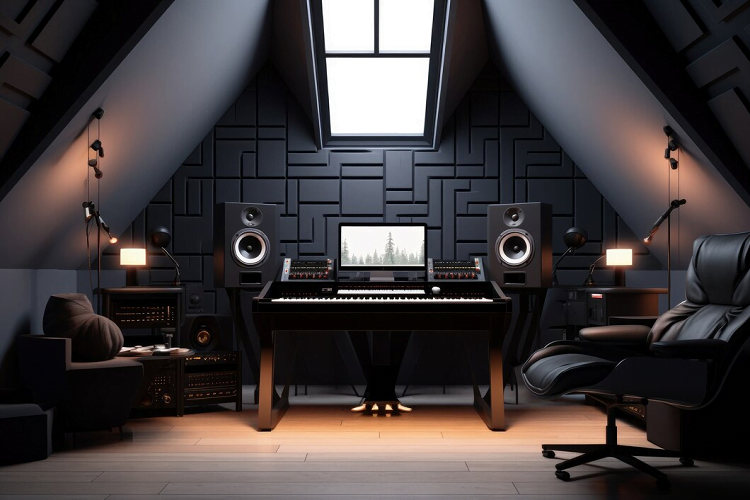Finding peace within your home has become a luxury that many strive for in our noisy world. Build a soundproof home is not just about creating a quiet sanctuary; It is about improving comfort and increasing property value. From bustling city dwellers to workers working from home, numerous people can benefit from soundproofing. This detailed dive into home soundproofing will guide you through why and how to achieve a quieter home environment.

Who Needs Soundproofing and Why?
The main reason to soundproof your home is people who live in noisy urban areas, families with young children, home-based professionals, and audio enthusiasts.
Urban residents face constant external noise from traffic, construction, and neighborhood activities, disrupting daily life and even affecting health. Families with young children can use soundproofing to help maintain a quiet environment conducive to sleep and relaxation.
Professionals working from home need a quiet space to focus and communicate effectively during virtual meetings. Lastly, audiophiles and home theater enthusiasts look to soundproofing to enhance their audio experience, containing sounds within their entertainment spaces and preventing disturbances.
Soundproofing Basics: Where to Start
The journey to a quieter home begins with identifying the most problematic areas where noise penetrates or escapes. Common points include doors, windows, walls, and floors. Upgrading these elements using soundproofing materials can significantly reduce noise levels.
Starting with windows, installing double-pane or acoustic windows can dramatically decrease external noise penetration. For doors, weatherstripping and solid cores are effective in dampening sounds.
Walls may require additional layers of drywall with damping compounds between them. Do not forget to update your ceiling with acoustic tiles or extra insulation to cut down on noise coming from above—especially useful in multi-story buildings.
Choosing the Right Materials for Soundproofing
Selecting the appropriate materials is crucial for effective soundproofing. The market offers a variety of options tailored to different needs and budgets. Mass-loaded vinyl (MLV) is a popular choice due to its high mass, which makes it excellent for blocking airborne noise.
Acoustic panels and foam tiles are used extensively for absorbing sound, particularly in rooms where echo reduction is crucial. For a more heavy-duty approach, specially formulated soundproofing drywall can add mass to walls and ceilings without requiring a complete overhaul of existing structures.
It is important to consider the specific soundproofing needs of each room and choose materials that reduce noise and blend with the home’s aesthetic.
The Importance of Soundproofing Pipe Wrapping
A frequently overlooked aspect of home soundproofing involves addressing noise from plumbing. Pipes can transmit sounds of running water, draining, and even conversations from one part of the home to another, particularly in multi-story buildings.
Wrapping pipes with soundproofing materials can dramatically reduce these noises. A soundproofing pipe wrap typically consists of thick foam or rubber layers that encase the pipes, dampening vibrations, and muffled sounds before they can travel.
This method not only improves the quality of life by reducing unwanted noise but also enhances privacy by preventing sound from leaking through vulnerable pipe spaces.
Implementing Soundproof Flooring Solutions
Flooring plays a significant role in how sound travels through a home, especially in apartment buildings or homes with multiple stories. Soundproofing floors typically involve laying down a dense underlay that acts as a barrier to both airborne and impact noise, like footsteps or dropped objects.
Materials like cork, rubber, and specialized acoustic underlays effectively reduce sound transmission between floors. For those with hardwood or tile floors, adding thick rugs with padding can also serve as an effective temporary or additional measure.
This section not only increases comfort but can also be a critical aspect for homes where noise reduction is needed from above and below.
Advanced Soundproofing Techniques and Smart Home Integration
Beyond basic soundproofing, some advanced techniques and technologies can further enhance a home’s sound environment.
One of the cutting-edge options includes installing smart soundproofing systems that use active noise cancellation technology—similar to what is found in noise-canceling headphones—to counteract external noise pollution actively.
Integrating smart home systems with soundproofing elements allows homeowners to control acoustic settings, adjusting sound levels based on real-time environment monitoring. While more costly, these advanced options offer a high-tech noise management solution and provide a customizable sound environment.
Conclusion
Soundproof your home is an investment in comfort, privacy, and quality of life. Soundproofing offers a practical solution to noise-related challenges, whether you are looking to block out the urban din, create a peaceful study space, or build the ultimate home theater experience. This not only makes your home more enjoyable but also increases its market value, proving that quiet is indeed a coveted luxury in today’s noisy world.



